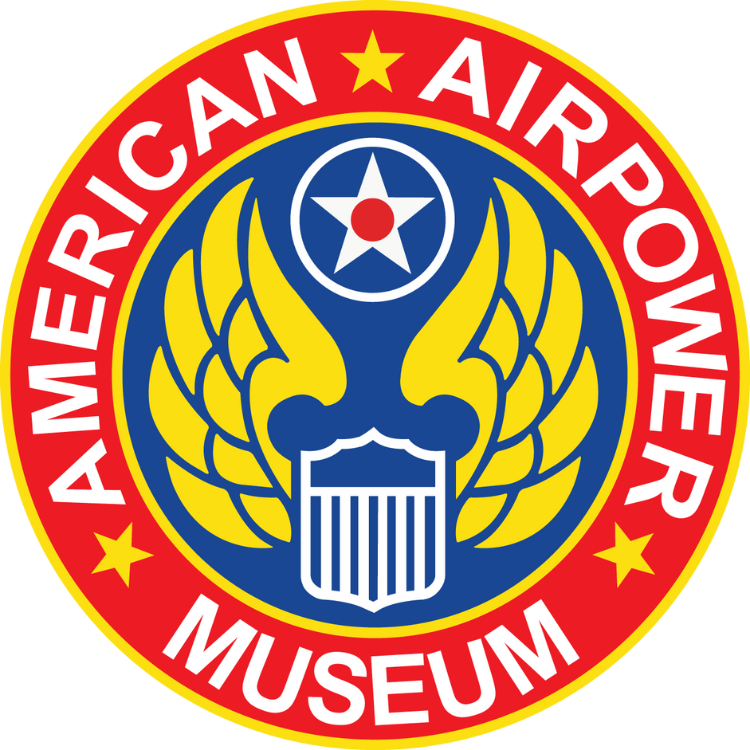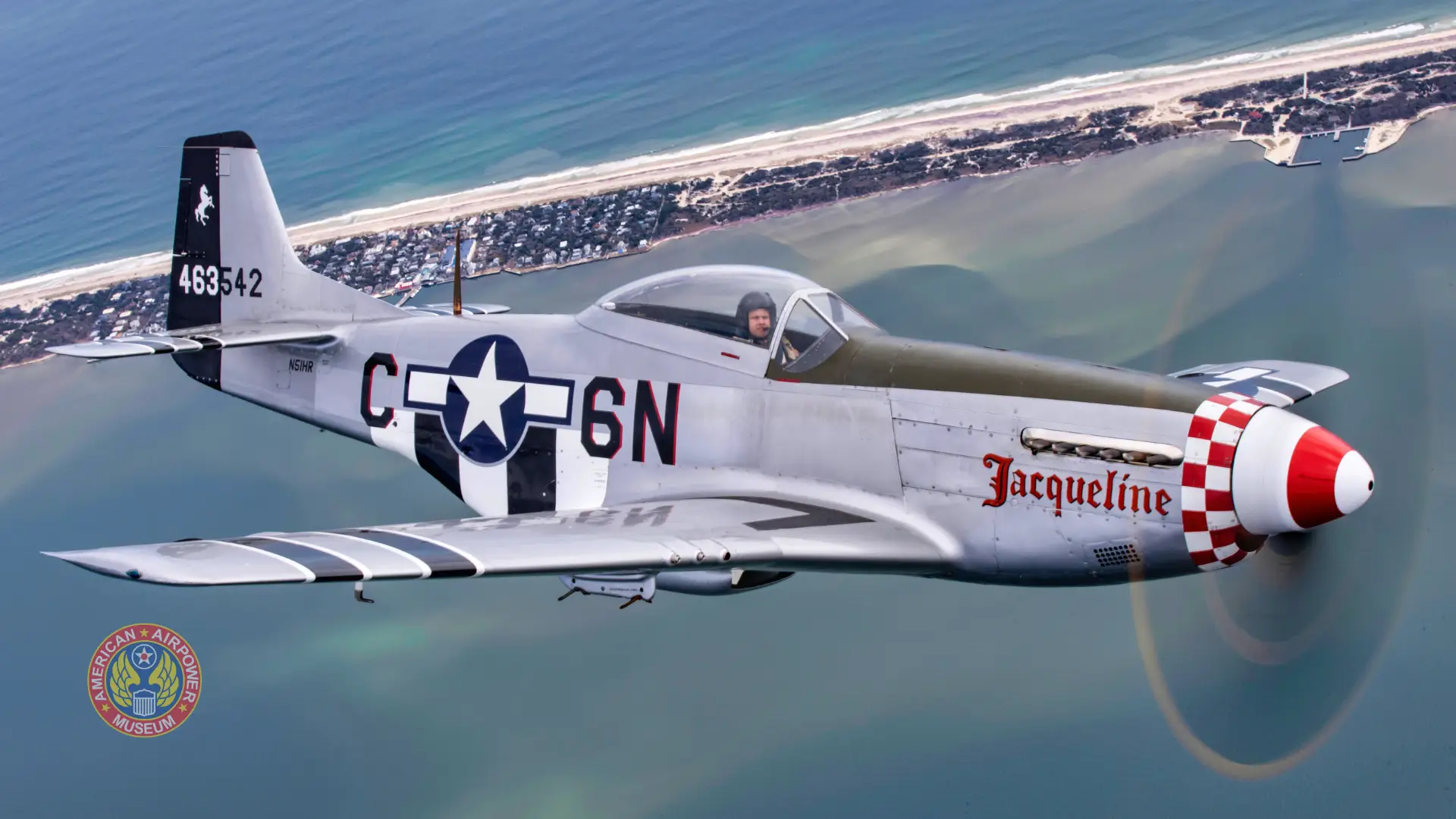Aircraft:
North American P-51D “Mustang”
Current Status:
Flyable
History:
The P-51 “Mustang” is one of the most well-known fighters of World War II. The Mustang’s impressive maneuverability and long-range capability made it one of the best bomber escort fighters of the war as well as a capable ground attack fighter-bomber. Designed in response to the British RAF lend lease request in 1940 for additional Curtiss P-40s, North American Aviation promised to design and produce something even better. The Mustang would go from concept to initial production and flight in barely 6 months, flying for the first time in October of 1940. Ironically the USAAF didn’t initially order the Mustang, but under direction of General “Hap” Arnold the USAAF would retain some of the British order and explore the use of the Mustang. This would lead to the USAAF accepting the first P-51As in 1942. Early A Models as well as the A-36 Apache attack variant would see combat in the China-Burma-India theater, and the North African Campaigns in 1943 with relative success due to the low altitude combat environment it fought in.
It would be the arrival of the new P-51B/Cs in England and their debut in the air war over Europe that would highlight the newly improved variants now fitted with the Packard Merlin Engine making the new P-51s capable of the long-range high-altitude escort much needed for the strategic bombing campaign against Germany. The Mustang’s initial success against the German Luftwaffe would be followed by the introduction of the P-51D in early 1944 and the now improved Mustang, fitted with the high visibility bubble canopy, would become the USAAF’s premiere long range escort fighter. P-51 units in Europe would claim nearly 5,000 German Aircraft shot down by the end of the war. Mustangs would also serve with distinction in the strategic bombing campaign against the Japanese Home Islands escorting B-29s and attacking ground targets in Japan.
The P-51s service wouldn’t end after World War II as it would go on to serve in the newly created US Air Force and be called upon once again at the outset of the Korean War in 1950. The Mustang would fill the gap from the large number still in service and stored post war. The Mustangs would prove their worth once again as they would be able to fly interdiction and Close Air Support due to their longer range, and endurance than the early Jet fighters of the time.
The now designated F-51 would serve in combat in Korea until 1953 when jet fighters would eventually replace most Mustang Units. The F-51 would go on to serve in the Air National Guard and Air Force Reserve until finally retired 1957. The Last mustangs in US Military service would serve as chase aircraft for the US Army test programs in 1968. Mustangs would go on to serve in foreign air forces, the last retiring in 1984. The P-51 has been a highly sought-after Warbird and Air Racer since the post WWII years and continues to attract the attention of pilots, historians, and spectators at air shows still today.
About Our North American P-51D “Mustang”:
The American Airpower Museum North American P-51D Mustang acquired in 2018 was produced at the main North American Aviation plant in Inglewood, California in 1944. Accepted by the USAAF in November of 1944 our P-51 was then shipped to the Italian Theater of Operations where it was a replacement aircraft for the USAAF 15th Air Force. It remained in the replacement depot having not been assigned to a combat squadron until July of 1945 when it was returned to the Unites States through the port of Newark, NJ. It would remain in storage until 1947 when it was returned to active Air Force operational status. The Aircraft would go on to serve in both the Active-Duty Air Force, and the Air National Guard until sold surplus in 1957.
- Oct 1947 To 31stFighter Group (Tactical Air Command), Turner AFB GA (deployments to Smyrna AFB TN, to F-51D)
- Nov 1948 To 171stFighter Squadron (Air National Guard), Detroit-Wayne County AP MI
- Jul 1950 To 172ndFighter Squadron (ANG), Kellogg Field MI
- Feb 1951 To 172ndFighter-Interceptor Squadron (Air Defense Command), Kellogg Field
- May 1951 To 56thFighter Wing (ADC), Selfridge AFB MI (deployments to Eglin AFB FL)
- Jan 1952 To Middletown Air Materiel Center, Olmstead AFB PA.
- May 1952 To 172ndFighter-Interceptor Squadron (ADC), Selfridge AFB (deployments to O’Hare IAP IL and Oscoda AP MI).
- Nov 1952 To 431stFighter-Interceptor Squadron (ADC), Selfridge AFB (deployments to Griffiss AFB NY and Eglin AFB)
- Mar 1953 To 37thFighter-Interceptor Squadron (ADC), Ethan Allen AP VT
- Dec 1953 To 182ndFighter-Bomber Squadron (ANG), Brooks AFB TX
- Aug 1956 To 182ndFighter-Interceptor Squadron (ANG), Kelly AFB
- Sep 1956 To Sacramento Air Materiel Area, McClellan AFB CA
- Feb 1958 Dropped from inventory sold as surplus
Our P-51D would go on to civilian ownership where it would eventually find a home in the personal collection of Mr. Tom Contri of Reno, NV and would remain there until 2017. Acquired by a private collection it is now on loan to the American Airpower Museum and flies regularly at the museum, and at Air Shows and events primarily in the Northeast United States.


